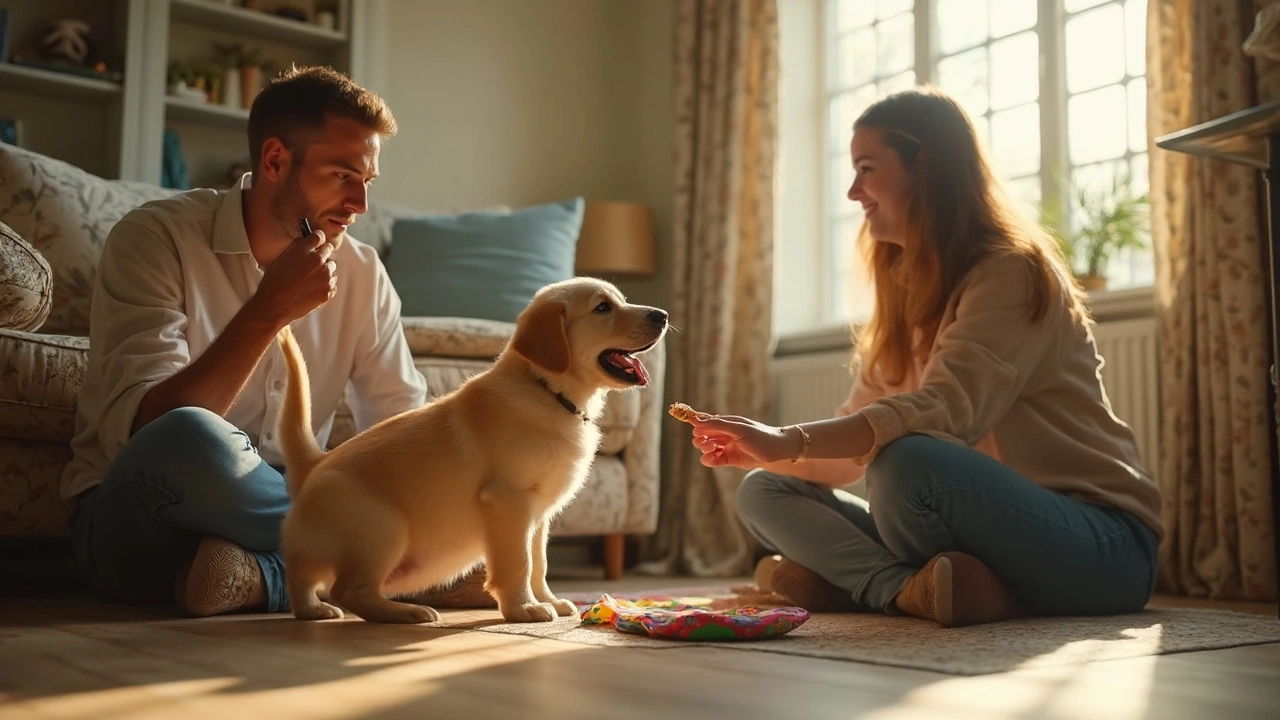Puppy Punishment: What Works and What Doesn’t
If your new pup is chewing shoes, barking at the door, or jumping on guests, you might feel the urge to scold or yank its leash. That’s a natural reaction, but most experts agree that harsh punishment can do more harm than good. Instead of teaching your puppy what to do, it often teaches fear and confusion. Below we’ll break down why punishment falls short and give you easy, positive steps that actually work.
Why Punishment Usually Misses the Mark
Dogs live in the moment. When you yell after a bite, the puppy might link the sound to a random stimulus instead of the bite itself. That means the lesson gets lost and the pup may become anxious or shy. Also, repeated harsh corrections can damage the trust you’re trying to build, making everyday training harder.
Another problem is timing. A puppy’s attention span is only a few seconds. If you wait even a moment to correct, the behavior is already over and the dog can’t connect the punishment to the action. So, yelling or grabbing after the fact rarely sticks.
Better Alternatives: Positive, Practical Corrections
1. Interrupt and Redirect – As soon as you see an unwanted action, calmly say “No” or use a short, firm “Eh‑eh!” and then give a more appropriate toy or behavior. For example, if the pup is chewing a shoe, pull the shoe away, say “No,” and hand over a chew toy. The redirection teaches the dog the right outlet.
2. Use Time‑Outs Wisely – A brief, 30‑second time‑out in a safe, boring area (like a crate with the door open) can reset a puppy’s excitement. It’s not a punishment zone; it’s a pause button. After the timeout, invite the pup back to play calmly.
3. Reward Good Choices – Catch your puppy doing something right and reward it instantly with a treat, praise, or a quick play session. The more you reward the behavior you want, the faster it sticks.
4. Consistency Is Key – Make sure everyone in the household follows the same rules. If one person lets the pup jump on guests while another scolds, the dog gets mixed signals and the training stalls.
5. Teach “Leave It” Early – The “Leave it” command gives you a reliable way to stop a puppy from grabbing something unsafe. Start with a low‑value item, reward the puppy for looking away, then gradually work up to higher‑value temptations.
6. Manage the Environment – Puppy‑proof your home by removing tempting items, using baby gates, and keeping dangerous objects out of reach. When you reduce the chances for bad behavior, you’ll need fewer corrections.
7. Stay Calm – Puppies pick up on your energy. If you stay cool and confident, the dog feels safe to learn. If you get angry, the pup may become nervous and repeat the behavior.
Remember, training isn’t about making the puppy perfect; it’s about guiding a curious animal toward safe, happy habits. By focusing on redirection, rewards, and a calm environment, you’ll see faster progress than any bark or yank could achieve.
Got a specific problem, like stopping puppy biting or house‑breaking accidents? Try the same steps: interrupt, offer a better option, and reward the good choice. Over time, the unwanted habit fades because the pup learns what’s expected.
Finally, be patient. Puppies grow and change fast, and setbacks are part of the process. Keep the training sessions short (5‑10 minutes), end on a positive note, and celebrate each tiny victory. Your puppy will soon trade the mischief for good manners, and you’ll enjoy a stronger bond built on trust, not fear.
Puppy Pee Problems: How to Handle Accidents in the House
Punishing a puppy for peeing in the house can backfire and set back their training. This article covers better ways to react to accidents and how to teach your pup where to go. Find out how puppy toys and play can help with training, why timing is everything, and common mistakes owners make. Packed with practical tips and real-life examples, this guide helps you raise a happy, well-behaved puppy.
